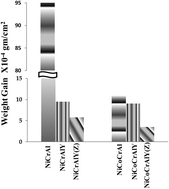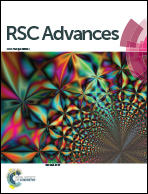FESEM and XPS studies of ZrO2 modified electrodeposited NiCoCrAlY nanocomposite coating subjected to hot corrosion environment
Abstract
The aim of this study is to investigate the influence of Co and reactive element oxide, i.e. ZrO2, addition on the hot corrosion behavior of NiCrAlY electrodeposited nanocomposite coatings. The hot corrosion behavior of the coatings was investigated in a medium comprising 75% Na2SO4 and 25% NaCl and expressed as weight change. The addition of ZrO2 resulted in a reduction of Co content from 40 wt% to 20 wt%, as shown by EDX. The hot corrosion studies revealed that the addition of cobalt and yttrium to the NiCrAl coating enhanced its corrosion resistance. However, the effect of Y was more pronounced in the case of NiCrAl compared to NiCoCrAl coatings. The introduction of small amounts of ZrO2 further resulted in a reduction in weight gain. The formation of oxide of Ni on the surface of NiCrAlY and that of Co on the surface of NiCoCrAlY coatings was confirmed by FESEM and XPS analysis. XPS analysis revealed the presence of oxide of Al as well as small amounts of oxide of Cr on the surface and near surface of NiCrAlY and NiCrAlY(Z) coatings, while only oxide of Cr was observed in NiCoCrAlY and NiCoCrAlY(Z) coatings and this was responsible for their improved hot corrosion resistance.


 Please wait while we load your content...
Please wait while we load your content...